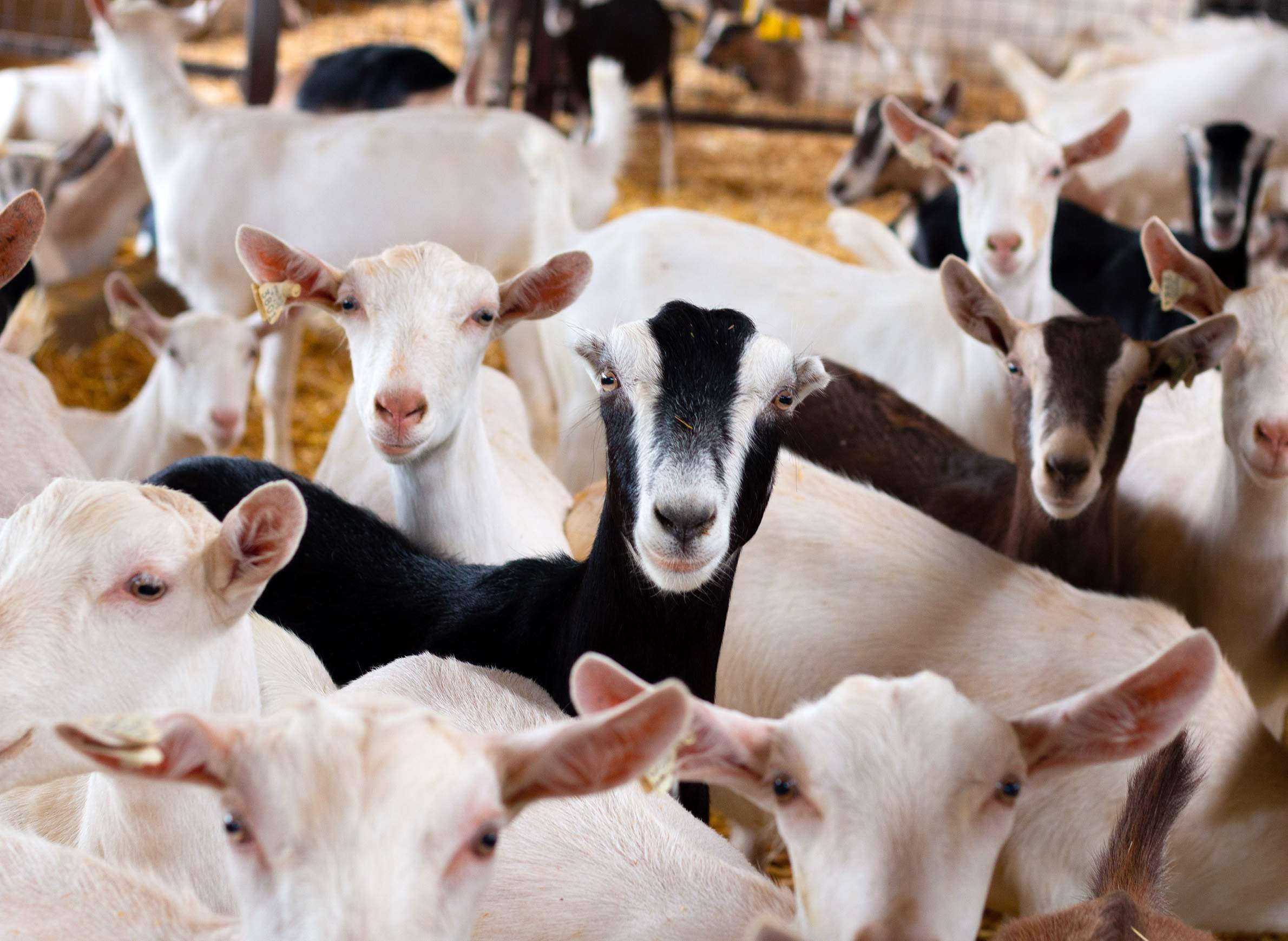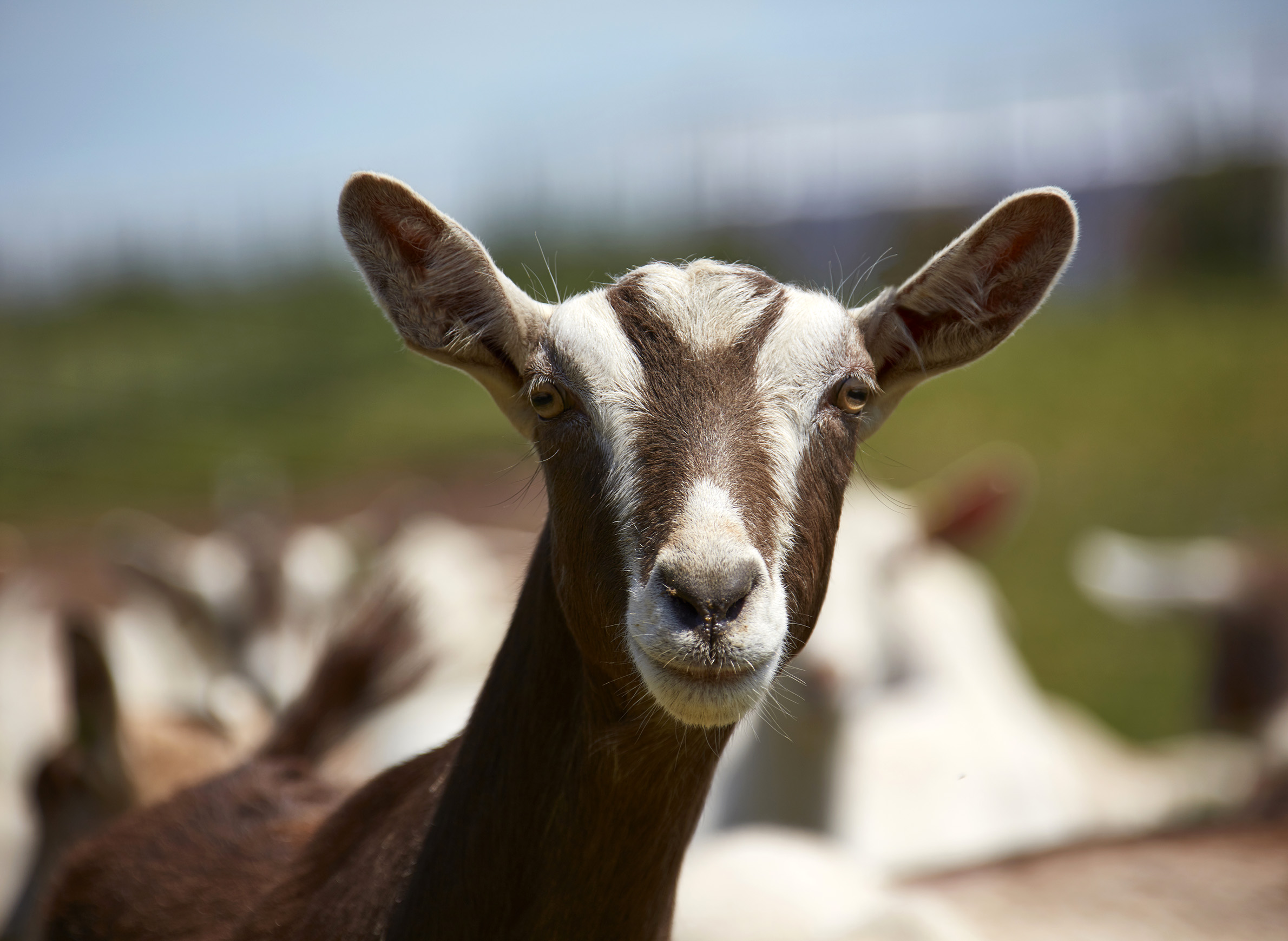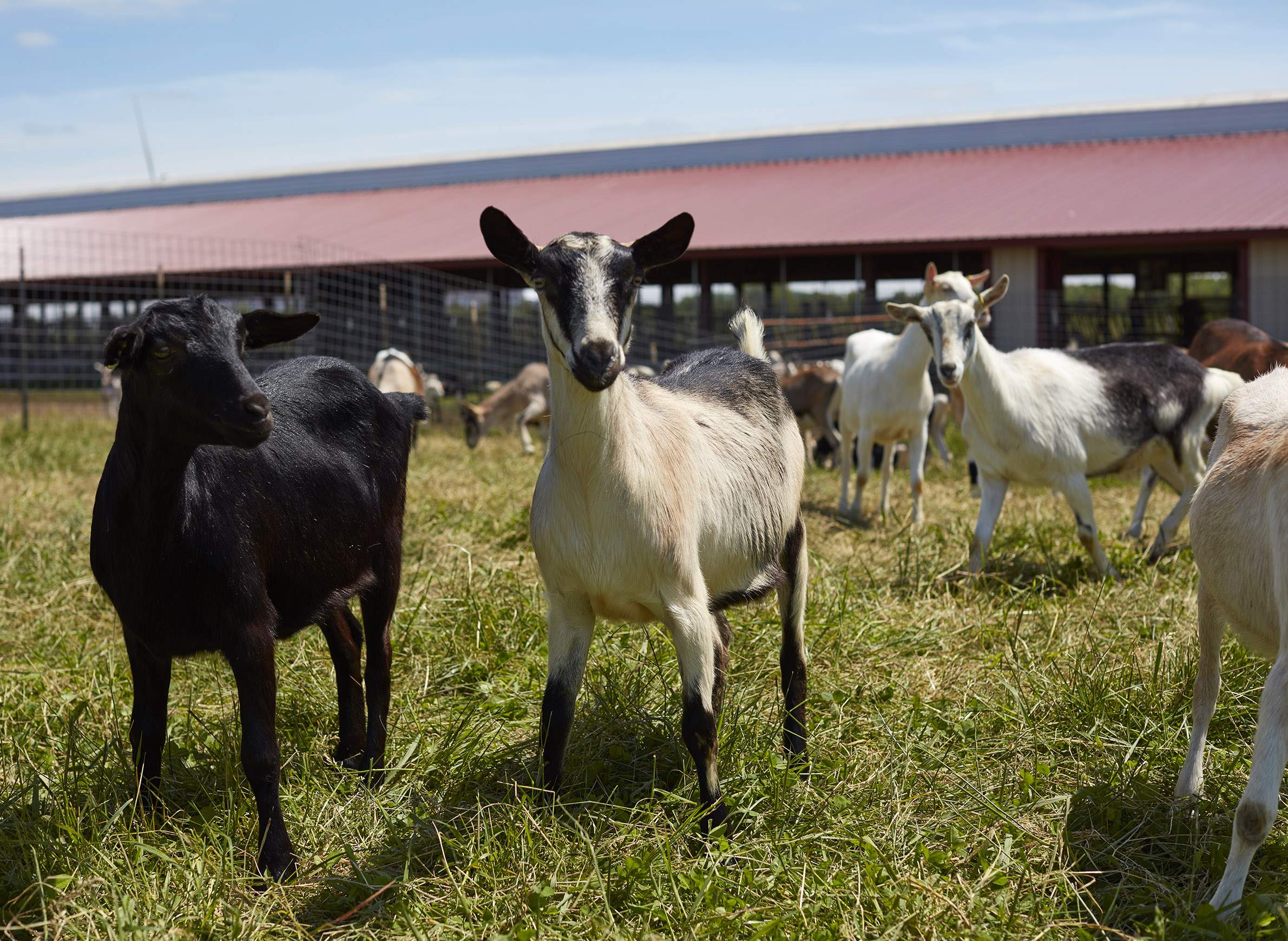
Wisconsin Is America's Dairy Goat Land

Wisconsin's self-proclaimed moniker as "America's Dairyland" is taking on fresh meaning in the 21st century thanks to a growing market for milk from an animal that bleats rather than moos. While the state's traditional dairy cattle industry continues to hemorrhage producers at a record pace, Wisconsin's dairy goat industry is in the midst of a long-term, and accelerating, growth spurt. Indeed, in 2019 Wisconsin can reasonably claim to be America's dairy (goat) land.
Data from the United States Department of Agriculture, which counts livestock across the United States every 5 years, show just how much Wisconsin dominates the nation's dairy goat industry. In 2017, the most recent year the USDA surveyed producers, the size of Wisconsin's dairy goat herd easily topped the nation at more than 83,000-head. California came in a distant second, with some 43,000 dairy goats, while Iowa, Texas and Missouri rounded out the top five.
It's not only the sheer size of Wisconsin's dairy goat herd that stands out: The state also leads the nation in the value of sales from dairy goat operations and is the epicenter of national growth in goat dairy.
While these figures give Wisconsin producers bragging rights among their peers elsewhere, they also reveal just how much, and how quickly, the industry has grown in the state in recent years. Between 2002, when the state's herd amounted to about 26,000 goats, and 2017, the number of dairy goats in the state skyrocketed some 222%.
This explosive growth — about half of which occurred in the five years between 2012 and 2017 — has even caught some producers off guard.
"It would've really surprised me when we started 10 years ago that now there would be so many goats in the state," said Becky Mills, who milks 110 goats and 280 cattle in Winnebago County with her husband, Marvin, and their son.
Wisconsin's dominance in the dairy goat industry
The growth of the industry is especially astonishing given its humble beginnings in the 1980s, when tariff threats prompted a scrappy upstart from France to bring European-style goat dairy processing to rural Wisconsin.
Arnaud Solandt moved with his parents from France to the U.S. in 1983. At the time, his father represented French food manufacturers to foreign markets and agreed to a four-year stint abroad. Solandt had just graduated from high school and decided to follow his parents and attend college in the U.S., but tragedy struck two years later when a car wreck killed his father and severely injured his mother. With his mother requiring care and two younger sisters at home, Solandt said he had little choice but to alter his plans.
"I had to get working," he said. "My father had been representing a French goat cheese company at the time, and the owner asked if I could get involved for a few months answering calls at the office and taking orders."
Then, a long-running trade spat between Europe and the U.S. over the use of hormones in American beef came to a head when widespread boycotts of American veal in European countries including France, Italy and Germany prompted U.S. officials to threaten a 100% tariff on French cheese.
"It was only a threat, but [American] buyers wanted to hold off on their purchases," Solandt said. "So I asked my [employers] 'Why not make goat cheese in the U.S.?' They said it wouldn't be easy, but find some goats and find a building and we'll see."
Solandt traveled far and wide in search of a region with enough dairy goats to start a cheese processing operation, he said, from Minnesota to Oregon and beyond. It was at a goat conference in California where he met a dairy goat farmer from Wisconsin who told him about a small dairy-goat cooperative in the south-central part of the state that might fit what he was after.
At the time there were only about 5,500 dairy goats in Wisconsin, according to the USDA, with a quarter of them concentrated in Columbia and Dane counties. Solandt soon came to an agreement with the co-op to purchase milk, and together with his French partners purchased an abandoned cheddar processing plant in Preston, in Adams County.
"The threat of tariffs was lifted at that point," Solandt said. "But there wasn't much risk and the building was very cheap. We found something in Wisconsin that was very good."
On July 4, 1989, the new company, called Montchevre, accepted its first milk delivery. After a couple years struggling to make ends meet, business began taking off in the early 1990s, Solandt said. Eventually, Montchevre bought a much larger processing plant in Belmont, in Lafayette County, and cultivated a milk supply network that steadily grew the dairy goat industry in Wisconsin and eastern Iowa.
By the time Solandt and his business partners sold the company to the Montreal-based dairy processor Saputo in 2017, Montchevre had 320 employees, contracts with about 500 farms and was the top-selling brand of goat cheese in the U.S.
Raising dairy goats can be tricky
The Mills in Winnebago County are among the roughly 500 farms that contracted with Montechevre and now sell milk to Saputo. The family entered the dairy goat business in 2009 after years of experience milking cattle and quite a bit of research about what to expect with goats, Becky Mills said.
She noted that while there are important differences between cattle and goats, including what she called their "vastly different" nutritional needs, Mills believes having a history in traditional dairy helped ease the transition to goats. She's witnessed numerous people enthusiastically start milking goats without enough preparation only to realize how difficult it can be to produce high-quality milk and turn a profit.
"I'm thankful I have a background with dairy cattle," she said. "The number of people that just decided that they’re going to milk goats because they think there's money in it and they jump in completely blind is astounding."
Anna Thompson Hajdik, vice president of the Wisconsin Dairy Goat Association, said that there are several common misconceptions about dairy goat farming that can lead to trouble for new producers who haven't done their homework. Chief among them is that goats are fine, or even thrive on, eating substandard forage.
"One of the kind of grand myths out there about the dairy goat world is that goats will eat anything," Thompson Hajdik said in an Aug. 12, 2019, interview on Wisconsin Public Radio's The Morning Show. "And that is a myth that, you know, so many of us in the industry are really … working hard to dispel. They are actually quite finicky."
In fact, Thompson Hajdik said in a follow-up interview with WisContext, achieving high-quality goat milk can require even more nutritional care than in cattle.
"Goats are a little more high-maintenance than cows, and getting a high level of performance means really tailoring the diet in some ways even more than cows," she said.
Feeding goats the right diet to achieve high-quality milk can be tough, Mills said, especially in years like 2019, when cold and wet conditions led to a rise in hay and grain prices. These and other expenses can be too much for many new and smaller producers to handle, as evidenced in the churn of dairy goat operations in Wisconsin.
Between 2002 and 2017, the number of dairy goat farms in the state grew by about 350, but that overall growth, concentrated in southwest and western Wisconsin, masks the industry's volatility. A quarter of Wisconsin counties actually had fewer dairy goat farms in 2017 than in 2002.
The finicky nature of dairy goats can also make scaling up an operation more difficult, Thompson Hajdik said, which is one reason why the average dairy goat herd in the U.S. includes only 15 goats. However, there are signs that Wisconsin's industry is becoming more consolidated.
Wisconsin's largest dairy goat businesses
The only measure of dairy goat farming that USDA tracks where Wisconsin lags behind other states is in its total number of dairy goat farms. With just a little over 1,000 farms, Wisconsin ranks 14th in the nation, slightly fewer than California and a number of other Midwestern states and well behind Texas, which boasts more than 3,600 farms.
As a result, the average size of Wisconsin’s dairy goat herds tops the nation, signaling a more developed, and more consolidated, local industry.
For example, a pair of massive new farms in Calumet County have demonstrated that, with enough capital, scaling up a goat operation in Wisconsin is possible. The farms include Drumlin Dairy, which milks about 8,000 goats and contracts with Saputo, as well as the nearby Chilton Dairy, which has capacity to milk between 6,500 and 9,000 goats and supplies LaClare Family Creamery in Malone, in Fond du Lac County. Chilton Dairy is owned by Milk Source, which also operates several of the state's largest dairy cattle operations.
Meanwhile, Drumlin is a venture of the owners of Holsum Dairy, another large dairy cattle producer in the state. When Holsum announced the new venture in 2016, those in the industry said it would easily be the largest dairy goat operation in the nation.
The two farms, which are located just 7 miles from each other in the town of Brothertown, milk as much as 20% of the state's dairy goats, accounting for a large part of the growth seen in the state's herd in recent years.
Though Drumlin Dairy and Chilton Dairy are enormous, they do not necessarily qualify as Concentrated Animal Feeding Operations in Wisconsin. Known as a CAFO, this type of business must house an equivalent of at least 1,000 animal units, according to the Wisconsin Department of Natural Resources, which defines one goat as one-tenth of an animal unit. That means a goat dairy would have to be at least 10,000-head to meet the threshold for air and water quality standards that come with a CAFO permit.
Drumlin Dairy is regulated under a CAFO permit for Holsum that includes nearby dairy cattle operations, according to Raechelle Cline, a spokesperson for the WDNR.
Management at both Drumlin and Chilton dairies declined to comment, as did representatives at Saputo.
However, Drumlin Dairy general manager Kevin Wellejus told Green Bay's Fox 11 in 2016 that Holsum was "approached by processors" to fulfill demand for goat milk in the state.
Meanwhile, Larry Hedrich, who owns and operates LaClare Family Creamery with his family, said that a contract with Chilton Dairy has allowed his processing business to flourish. The Hedrich family has milked dairy goats since the 1970s, and today milks several thousand goats. Unlike most Wisconsin producers, however, they no longer sell their milk but process it into dairy products on-site in what is known as a farmstead creamery operation.
"We had come to the conclusion that if we were to survive in the long-term we had to add value to our milk," Hedrich said. "And that caused us to look at processing milk products."
After a trip to Europe in 2009 to study how farmstead operations there work, the Hedrich family jumped into the business, with Larry's daughter, Katie, becoming a cheesemaker. Business steadily grew, Hedrich said, sometimes faster than they could manage.
"We ran short on milk for the first few years until I talked to Milk Source," Hedrich said. "The [contract] with Chilton Dairy is what's allowed our plant here to grow." More broadly, Hedrich points to Wisconsin's extensive dairy infrastructure as key to growth of the wider industry.
Even with the success of businesses like Montchevre and LaClare in Wisconsin, some are anxious that the industry's growth is beginning to crowd out smaller producers, leading to a dynamic that is somewhat reminiscent of the dairy cattle industry, said Becky Mills and Anna Thompson Hajdik.
There are only a few major goat milk processing plants in the state, including Saputo, that contract with smaller farms, and they can exercise considerable power over producers by dictating milk hauling routes and determining when to accept new supply contracts. As of fall 2019, Saputo was not accepting new contracts, according to Mills, but potential plans for an expansion of its plant in Lancaster, in Grant County, could significantly add capacity and demand for more milk.
Still, Mills remains concerned that potential smaller producers could be left on the sidelines as larger operations fulfill demand among processors.
"Why should the plants go to 10 little guys if there's one big one?" said Mills.
The farmstead route can be an expensive risk itself, made even riskier by new producers who might find the notion of producing artisanal goat cheese more romantic than financially feasible, Thompson Hajdik said.
"For people wanting to get into goats, the biggest thing is you've got to have a plant that's willing to take your milk before you take the leap," she said to WisContext. "People can have stars in their eyes about goats and making a living milking goats, but the economics of it is just so complex. We're in a better place overall than dairy cattle, but when you have these 7,000-head dairies coming in, you're starting to see similar dynamics. As a small producer, there's just so much that's out of your control, particularly if you're going to just milk goats and sell your milk. That kind of tension is something a lot of people don't realize."




